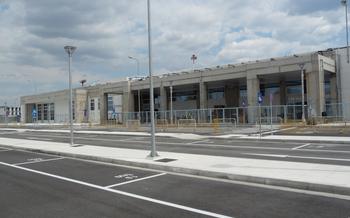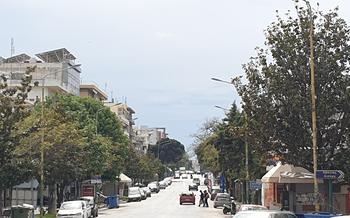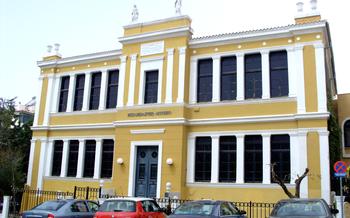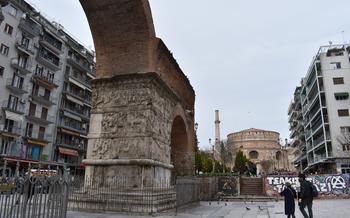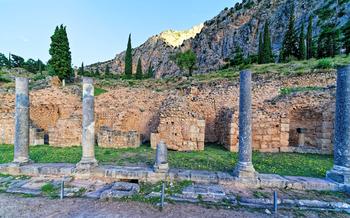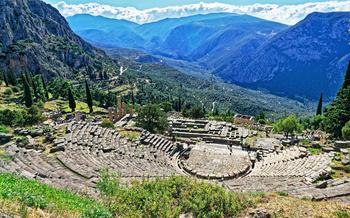
The Byzantine Walls of Didymoteicho
- The Byzantine Walls of Didymoteicho
- Historical Background
- Architectural Features
- Cultural Significance
- Visitor Experience
- Practical Information
- Things to Do Nearby
- Historical Anecdotes
- Tips for Visitors
- Photography Tips
- Hidden Gems
- Local Customs and Traditions
- Historical Figures
- Environmental Sustainability
- Insider Tip: Secret Viewpoint
The Byzantine Walls of Didymoteicho
The Byzantine Walls of Didymoteicho stand as a testament to the strategic importance of the city throughout history. Constructed during the Byzantine era, these walls were designed to protect the empire from invasions and served as a crucial defensive barrier against encroaching forces. Their unique design, featuring towers, gates, and battlements, reflects the advanced engineering skills of the Byzantines. Today, the walls stand as a symbol of resilience and determination, embodying the rich cultural heritage of the region. Visitors can explore the visitor center, take guided tours, and marvel at the architectural prowess of this historic site, gaining insights into its significance and enduring legacy.
Historical Background
The history of the Byzantine Walls of Didymoteicho is intricately linked to the rise and fall of empires and civilizations. In ancient times, the city of Didymoteicho was founded as part of the Kingdom of Thrace, serving as a strategic outpost along the banks of the Maritsa River. During the Byzantine era, the city's importance grew significantly, becoming a major military and administrative center. It was at this time that the impressive walls were constructed, serving as a testament to the engineering prowess and defensive capabilities of the Byzantine Empire.
The walls stood as a formidable barrier against invasions from the east, protecting the Byzantine territories from nomadic tribes and rival kingdoms. In the 14th century, the Ottoman Turks emerged as a powerful force in the region, and their sights soon fell upon Didymoteicho. The city withstood a prolonged siege in 1366, led by Sultan Murad I, but eventually succumbed to the Ottoman forces. The walls, however, remained largely intact, serving as a reminder of the city's resilience and its enduring significance throughout history.
Architectural Features
The Byzantine Walls of Didymoteicho stand as a testament to the ingenuity and skill of their builders. Constructed primarily of stone and brick, with mortar used to bind the materials together, the walls showcase a remarkable combination of strength and resilience. The defensive structures along the walls are equally impressive, featuring towers that provided a vantage point for archers and guards, as well as arrow slits that allowed defenders to fire upon attackers while remaining protected. The architectural style of the walls blends Byzantine and Ottoman influences, reflecting the rich history of the region. In recent years, extensive restoration efforts have been undertaken to preserve this architectural masterpiece for future generations, ensuring that its grandeur and significance continue to inspire awe and admiration.
Cultural Significance
The Byzantine Walls of Didymoteicho hold immense cultural significance, serving as a testament to the region's rich history and resilience. They stand as a symbol of the determination and fortitude of the local people, who faced numerous invasions and challenges throughout the centuries but never succumbed to adversity. The walls have become an integral part of the city's identity, representing its unique blend of Byzantine and Ottoman heritage.
In recognition of their exceptional cultural value, the Byzantine Walls of Didymoteicho have been designated as a UNESCO World Heritage Site. This prestigious designation highlights the global importance of the walls, not only as a historical monument but also as a symbol of cultural diversity and resilience. The walls have become a source of pride for the local community and attract visitors from around the world who come to admire their beauty, learn about their history, and experience their enduring cultural significance.
Local traditions and customs are closely intertwined with the Byzantine Walls of Didymoteicho. The city hosts an annual festival dedicated to Saint George, the patron saint of the city, which features traditional music, dancing, and food. During the festival, the walls come alive with vibrant colors, lively performances, and the infectious energy of the local community.
Stories, myths, and legends have been passed down through generations about the walls and their history. These tales often involve tales of bravery, sacrifice, and triumph, reflecting the deep connection between the local people and their cultural heritage. The walls have become a source of inspiration and pride, reminding the community of their ancestors' struggles and achievements.
Visitor Experience
Guided tours of the Byzantine Walls of Didymoteicho are available, providing visitors with a chance to learn about the history and significance of this remarkable site. Experienced guides will lead you through the walls, pointing out key features, explaining their defensive mechanisms, and sharing stories about the people who lived and fought here. Visitors can also explore the visitor center, which houses exhibits, interactive displays, and information about the walls and the surrounding region.
The Byzantine Walls of Didymoteicho are easily accessible, with well-maintained paths and walkways allowing visitors to navigate the site with ease. Signage is provided in multiple languages, ensuring that visitors from all over the world can understand the historical significance of the walls. For those with disabilities, wheelchair-accessible routes are available, making the site inclusive and welcoming to all.
Photography enthusiasts will find ample opportunities to capture stunning images of the Byzantine Walls of Didymoteicho. The walls offer a variety of angles and perspectives, allowing photographers to experiment and create unique and captivating shots. The best time for photography is during the golden hours of sunrise and sunset, when the walls are bathed in a warm, golden light.
Practical Information
Location
The Byzantine Walls of Didymoteicho are situated in the northeastern part of Greece, in the region of Eastern Macedonia and Thrace. The city of Didymoteicho is approximately 20 kilometers from the Greek-Turkish border and can be easily reached by car or public transportation.
Admission Fees
There is no admission fee to visit the Byzantine Walls of Didymoteicho. However, visitors may need to pay a small fee for parking or guided tours, if available.
Opening Hours
The walls are open to the public 24 hours a day, seven days a week. However, the visitor center and any guided tours may have specific operating hours, which should be checked in advance.
Facilities
The site offers basic facilities for visitors, including restrooms, parking, and a small snack bar. However, it is advisable to bring your own food and water, especially if visiting during the summer months.
Things to Do Nearby
Explore the city of Didymoteicho
Beyond the Byzantine Walls, the city of Didymoteicho offers a wealth of other attractions to discover. Immerse yourself in the city's rich history by visiting the Archaeological Museum, which houses a collection of artifacts from the region's past. Explore the charming old town, with its narrow cobbled streets, traditional houses, and historic churches. Don't miss the vibrant central market, where you can browse local produce, handicrafts, and delicacies.
Visit the surrounding countryside
The natural beauty of the region surrounding Didymoteicho invites exploration. Escape the city and venture into the picturesque countryside, where you can hike through lush forests, admire stunning mountain views, and encounter traditional villages nestled amidst rolling hills. Discover the nearby Evros River, a haven for birdwatchers and nature enthusiasts, where you can spot a variety of bird species and explore the diverse flora and fauna of the area.
Indulge in local cuisine
Didymoteicho's culinary scene is a delightful blend of traditional Greek flavors and regional specialties. Indulge in mouthwatering dishes prepared with fresh, local ingredients, such as juicy grilled meats, flavorful stews, and savory pastries. Don't miss the opportunity to sample the region's renowned cheeses, produced using traditional methods and boasting unique flavors. For a sweet treat, try the local baklava, a filo pastry filled with nuts and honey, a testament to the region's rich culinary heritage.
Experience cultural events
Didymoteicho comes alive during its many cultural events and festivals throughout the year. Immerse yourself in the vibrant atmosphere of the annual Festival of Saint George, the city's patron saint, which features traditional music, dancing, and food, showcasing the region's rich cultural traditions. Attend local concerts, art exhibitions, and theater performances to experience the diverse artistic talents of the region.
Historical Anecdotes
The Siege of Didymoteicho: In 1366, the Ottoman army led by Sultan Murad I laid siege to the city of Didymoteicho. The Byzantine defenders, under the command of Emperor John V Palaiologos, put up a valiant fight and successfully repelled the Ottoman attack. This victory was a significant turning point in the Byzantine-Ottoman wars and demonstrated the resilience and determination of the Byzantine people.
The Lost Treasure of the Walls: Legend has it that a vast treasure was hidden within the walls of Didymoteicho by the Byzantines during the Ottoman conquest. The treasure is said to consist of gold, silver, and precious jewels, and many have searched for it over the centuries. However, the treasure remains undiscovered, and its existence is still a mystery.
The Secret Tunnel: Beneath the walls of Didymoteicho lies a secret tunnel that was used by the Byzantines to escape the city during times of danger. The tunnel is said to be long and winding, and it leads to a hidden exit outside the city walls. It is a testament to the ingenuity and resourcefulness of the Byzantine engineers.
The Ghost of the Byzantine Soldier: Some say that the walls of Didymoteicho are haunted by the ghost of a Byzantine soldier who was killed during the siege of the city. The soldier is said to patrol the walls at night, guarding them even after death. His presence is a reminder of the sacrifices made by the Byzantines to defend their city.
Tips for Visitors
When visiting the Byzantine Walls of Didymoteicho, it is important to consider a few tips to make your experience more enjoyable and respectful.
-
Choose the right time to visit: The best time to visit the walls is during the shoulder seasons (spring and autumn) when the weather is pleasant and there are fewer crowds. Summer months can be hot and crowded, while winter weather can be cold and unpredictable.
-
Dress appropriately: Wear comfortable shoes as you will be doing a lot of walking on uneven terrain. Dress in layers as the weather can change quickly, especially in the spring and autumn.
-
Bring water and snacks: There are no food or drink vendors within the walls, so it is important to bring your own supplies.
-
Respect the site: The Byzantine Walls of Didymoteicho are a UNESCO World Heritage Site and should be treated with respect. Do not climb on the walls or damage any of the structures.
Photography Tips
To capture the essence and beauty of the Byzantine Walls of Didymoteicho through photography, consider the following tips:
-
Capture the best angles: Explore different viewpoints and angles to find the most flattering perspectives of the walls. Experiment with shooting from various distances and heights to create dynamic compositions.
-
Use the right lighting: The quality of light can make a significant difference in your photographs. Aim to visit the walls during the golden hours of sunrise and sunset, when the warm, diffused light casts a magical glow on the ancient stones.
-
Experiment with different perspectives: Don't limit yourself to traditional eye-level shots. Try capturing the walls from unique angles, such as from above or below, to create more dramatic and visually interesting images.
-
Capture the essence of the site: While capturing the architectural details of the walls is important, don't forget to convey the historical significance and atmosphere of the site. Include elements such as people, shadows, or surrounding landscapes to create a sense of context and depth.
Hidden Gems
Beyond the main attractions of the Byzantine Walls of Didymoteicho, there are several hidden gems waiting to be discovered by curious explorers. One such gem is the secret garden, a tranquil oasis nestled within the walls. This hidden sanctuary offers a respite from the bustle of the city, inviting visitors to relax and soak in the serenity of nature.
Another hidden gem is the forgotten tower, a lesser-known structure that stands apart from the main fortifications. This tower provides breathtaking views of the surrounding landscape, allowing visitors to capture the vastness and beauty of the region.
For those interested in uncovering the ancient history of the walls, the ancient cistern is a must-visit. This hidden reservoir was once used to store water for the city's inhabitants, providing a glimpse into the daily lives of the people who lived within these walls centuries ago.
Finally, hidden inscriptions and carvings can be found throughout the walls, offering clues about their history and construction. These hidden treasures invite visitors to become detectives, piecing together the story of this remarkable site.
Local Customs and Traditions
The Byzantine Walls of Didymoteicho are not just a historical site but also a place where local customs and traditions are deeply rooted and celebrated. The annual Festival of Saint George, held in honor of the city's patron saint, is a vibrant display of local culture, featuring traditional music, lively dancing, and delectable food. The festival brings the community together to celebrate their heritage and pay homage to Saint George, whose image can be found throughout the city.
Storytelling is an integral part of the local tradition, with tales and legends passed down through generations. These stories often revolve around the walls, their history, and the people who have lived within them. Locals take pride in sharing these stories with visitors, offering a glimpse into the rich cultural tapestry of the region.
Local handicrafts, such as weaving, pottery, and embroidery, showcase the artistic talents of the community. Visitors can find unique and beautiful handmade items that reflect the cultural heritage of the region. These handicrafts are often sold at local markets and shops, providing an opportunity to support local artisans and take home a piece of Didymoteicho's cultural charm.
The culinary delights of Didymoteicho are not to be missed. The local cuisine features fresh, seasonal ingredients and traditional recipes that have been passed down through generations. Visitors can savor mouthwatering dishes prepared with locally grown produce and aromatic herbs, reflecting the region's rich culinary traditions.
Historical Figures
Prominent historical figures associated with the Byzantine Walls of Didymoteicho played pivotal roles in shaping the site's history and significance. Emperor John V Palaiologos, a Byzantine ruler, oversaw the construction and fortification of the walls, recognizing their strategic importance in defending the empire against invasions. Sultan Murad I, an Ottoman sultan, led the siege of Didymoteicho in 1366, eventually conquering the city and incorporating it into the Ottoman Empire. Gazi Evrenos Bey, a distinguished Ottoman general, played a crucial role in the conquest and subsequent expansion of the Ottoman Empire. Constantine Palaiologos, the last Byzantine emperor, was born and raised in Didymoteicho, leaving an indelible mark on the city's history before his tragic fate during the fall of Constantinople. These individuals' contributions have left a lasting legacy on the Byzantine Walls of Didymoteicho, making them a captivating site for history enthusiasts.
Environmental Sustainability
The Byzantine Walls of Didymoteicho are not just a historical site but also a natural treasure. The surrounding area is home to diverse flora and fauna, and there are ongoing efforts to protect and preserve the environment. Visitors are encouraged to adopt eco-friendly practices, such as reducing waste, conserving water, and using sustainable transportation options. The site also promotes the use of renewable energy sources, such as solar and wind power, to minimize its environmental impact. By embracing sustainable tourism, visitors can help protect the walls and their surroundings for future generations while enjoying the rich history and cultural heritage of this unique destination.
Insider Tip: Secret Viewpoint
For a truly unforgettable experience, venture off the beaten path and seek out the hidden viewpoint that unveils a breathtaking panoramic vista of the Byzantine Walls of Didymoteicho and the surrounding countryside. This secret spot, known only to a few locals and intrepid travelers, offers a unique perspective that captures the grandeur of the walls and their harmonious blend with the natural landscape. As you gaze upon this awe-inspiring scenery, you'll feel a sense of tranquility and wonder, transported back in time to witness the rich history that unfolds before you.
